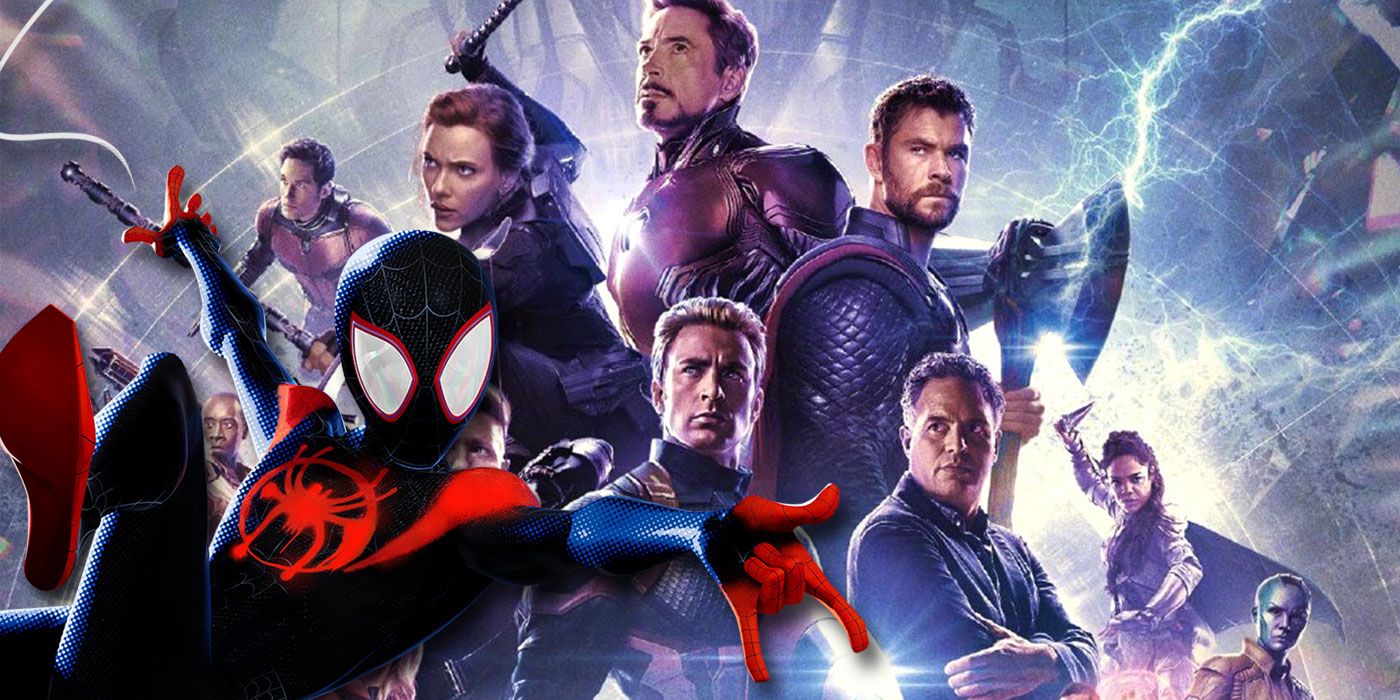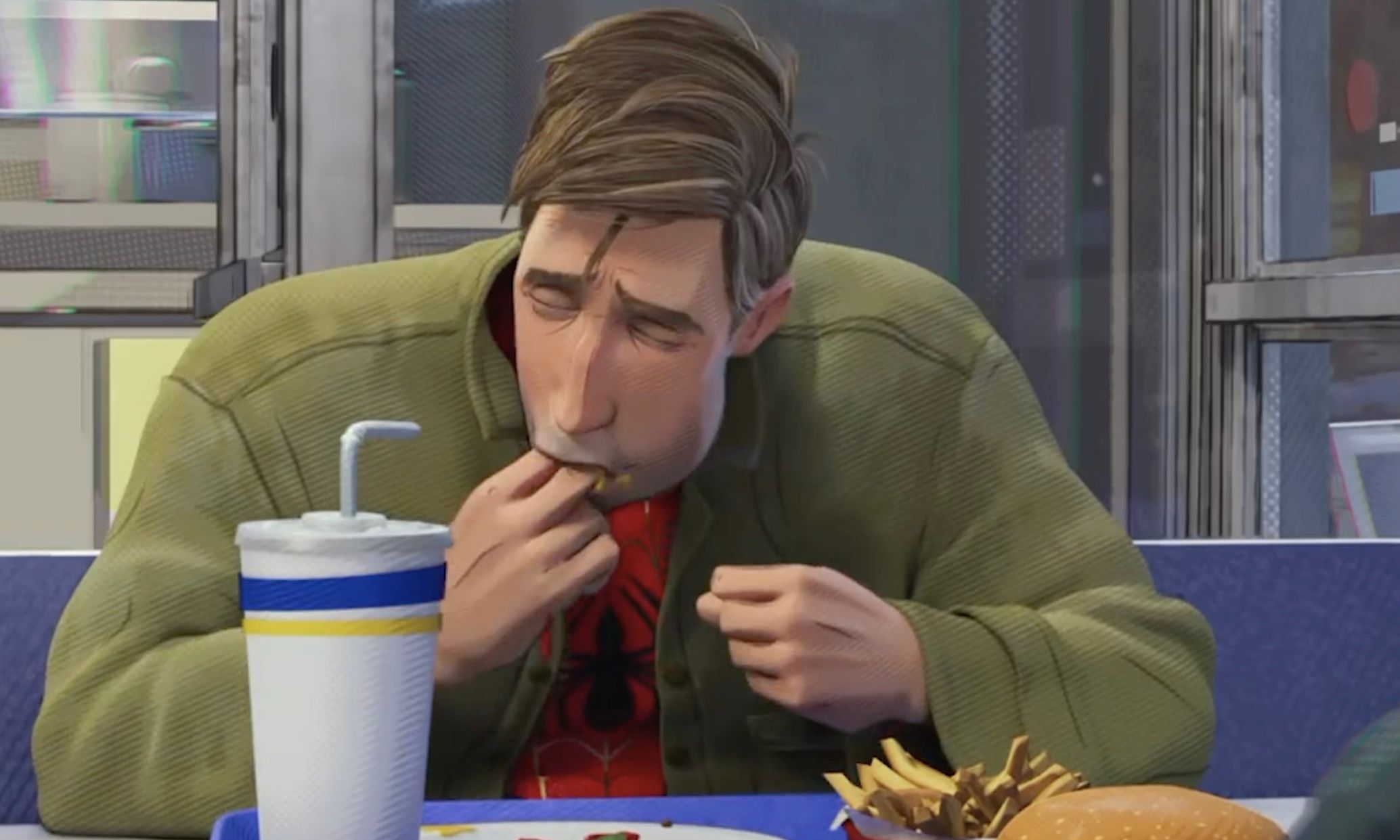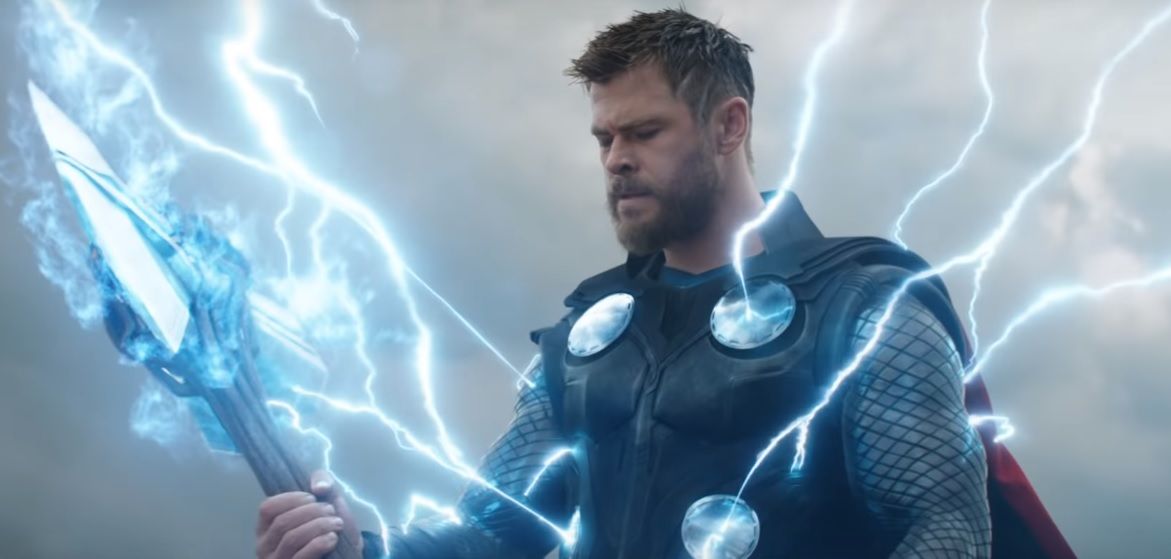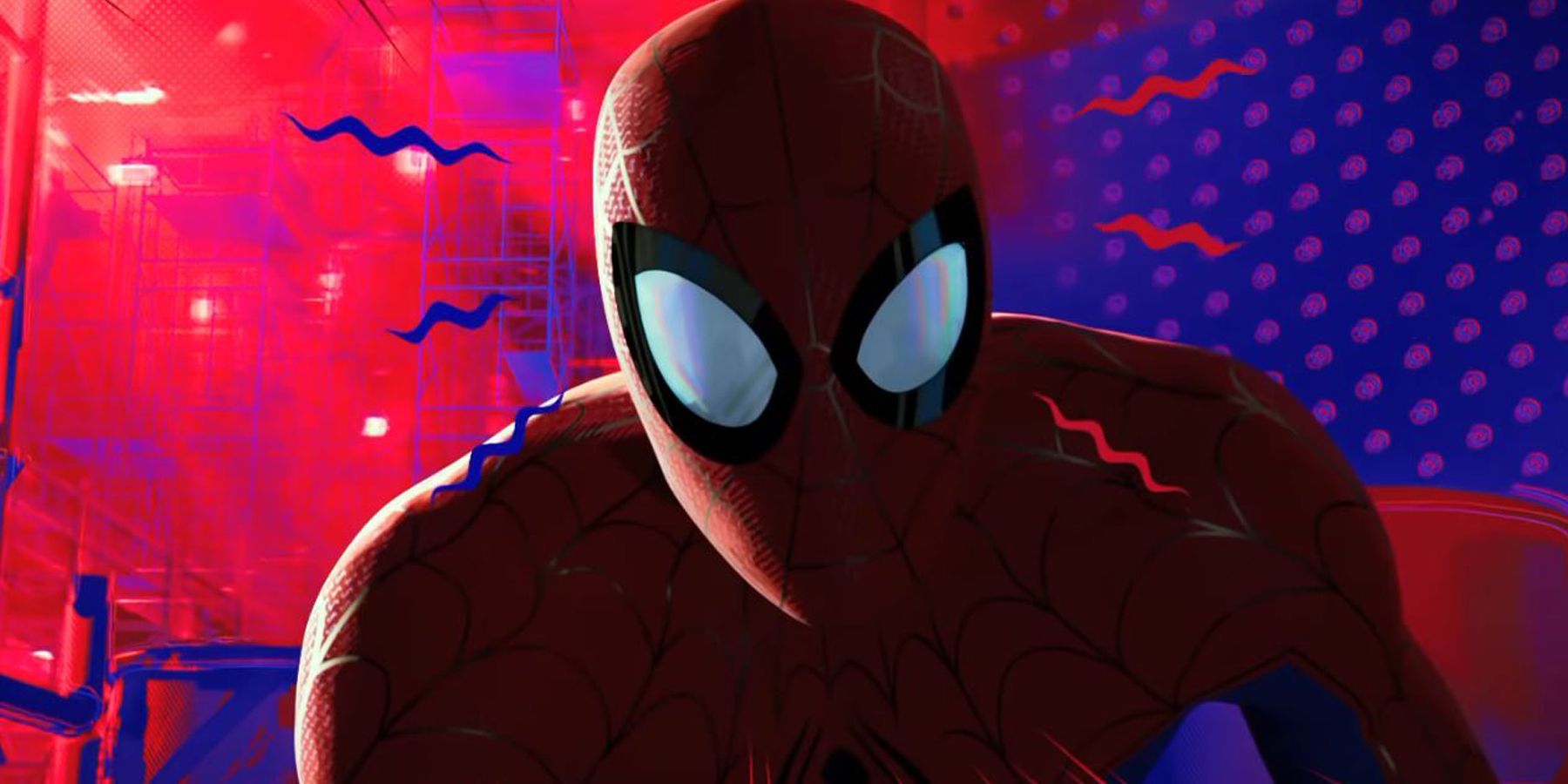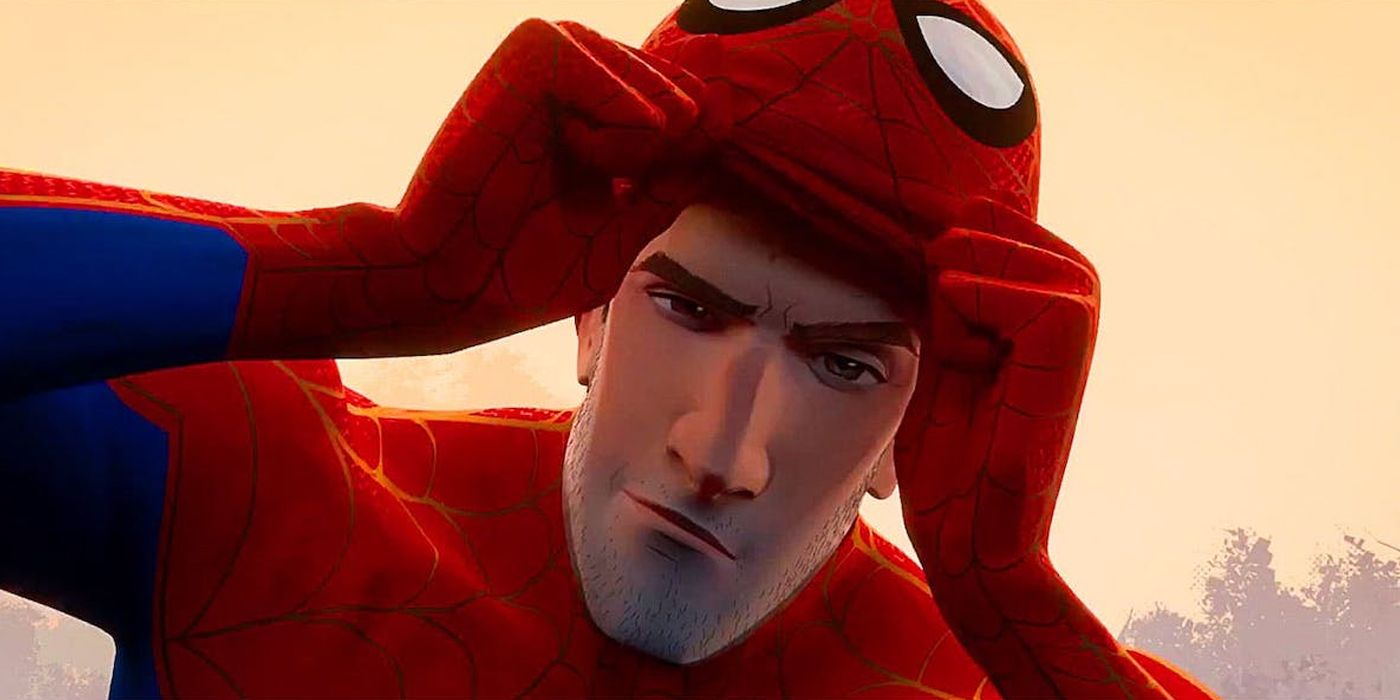Crushing failure is never easy, but when the stakes are at superheroic levels then failure has a pretty intense cost. The loss of loved ones? A sense of absolute failure? Or, perhaps, the death of half the population of a universe? All of this can seem overwhelming under normal circumstances. When someone is a superhero, though, it just becomes larger than life. In some cases, quite literally.
In both Avengers: Endgame and Spider-Man: Into the Spider-Verse, a character fails. Hard. And the character processes this failure in essentially the same way: becoming reclusive, binge eating/drinking and generally becoming a bit of a slob. Both characters deal with their trauma by not dealing with it. They do not process their pain so much as try to outrun it. Arguably, this is one of the most realistic and human ways superheroes have dealt with pain in cinema so far, and, quite honestly, is refreshing to see in some respects.
So, why did both films make this creative decision? And which film did it better?
The Dad Bod
Upon release, many people joked that Peter B. Parker sported a dad bod, which is honestly very accurate. Both Peter B. Parker and the Mighty Thor, broken by life, are sporting a very different physique than fans are probably expecting. While both characters are still incredibly powerful and mighty (Thor, in an especially gratifying scene, is deemed still worthy of Mjolnir despite his trauma), they are not physically the fit heroes they are known to be.
This actually does tie in with how people in real life deal with trauma. Many people, when put under extreme pain, do resort to binge eating or alcoholism as a way to avoid feeling their pain. It's a very human thing to do. Very few people are capable to assessing their problems in a straightforward manner.
So, it is self-destructive. And, usually, results in significant weight gain or getting out of shape. This offers a good visual representation of the character's internal pain and discomfort.
These two films are not the only stories to use this visual as a means of showing a character has undergone some sort of pain. Game of Thrones, Yuri on Ice and even Friends all use this as a plot point, to varying degrees of seriousness. Some stories use this as a temporary joke at the character's expense or to portray a mighty fall from grace.
Recovery Takes Time
Of course, this leads to the problematic implications -- that fatness is inherently the worst state a person can inhabit. This is especially true if the character's weight is seen as a punchline. Even more so if a long-term goal of the character is to return to their former shape, thus becoming "better" as a result.
This leads to a very interesting scenario with both Peter B. Parker and Thor. In both cases, the characters do not lose any weight by the time the films end. They are fairly consistent throughout. The weight doesn't really impede their characters or prevent them from being superpowered.
So, on the one hand, it shows the permanent mark of trauma on a person, externalized. But it also shows the characters becoming at peace with themselves rather than feeling a need to change. Of course, it's likely that Thor will be fit in future films, so this point here isn't really a long-term response.
The bigger issue is how often the weight is mentioned at the character's expense.
Humiliation for Failure
Again, another huge aspect of this trauma is how other characters respond to this change. In both Spider-Man: Into the Spider-Verse and Avengers: Endgame, the surrounding cast tease or mock how our forlorn heroes appear, to varying degrees of cruelty.
Peter B. Parker is teased on occasion, though often in a way that is either mildly concerned or dismissive. At no point is Peter overtly mocked by the entire cast. Nor is he not taken seriously by anyone. The biggest gag with Peter is near the end of the film when he's hardly able to function around an alternate version of Mary Jane Watson due to his past regrets.
On the other hand, there's Thor. With the exception of Bruce Banner and possibly Scott Lang, every single character mocks, dismisses or refuses to take Thor seriously until the very end of the film, at the culmination of his character arc.
While both Peter and Thor undergo the same general arc, their roles in the story are vastly different. Peter is a broken man, yes, but he's still Spider-Man. Thor failed so colossally (in his eyes) that he believes he is unworthy, thus not worthy of the grandeur of his position. Therefore, it isn't until the second half of the film, when he realizes that, despite it all, he is worthy, that he is taken seriously.
Social Withdrawal
This is an element that is less obvious, as the whole film is about incorporating people into a team. Once the first act ends, both characters work with a team of other characters.
However, that doesn't change the fact that, in both Spider-Verse and Avengers: Endgame, the characters cut off social contact from their loved ones. Peter hesitates to contact Mary Jane a bit too long, which results in his marriage crumbling. Thor refuses to visit the people of New Asgard, and his own friends from the Avengers don't know what happened to him. Both need to be drawn into the team by the more optimistic members of the group.
And it is perhaps this social discomfort that is the most profound of all their changes. Both characters are known for their bombastic personalities (either Spidey quipping or Thor's boasting). To see both so withdrawn is at once tragic and uncomfortable.
However...
The Big Difference
There is one key difference between Spider-Man: Into the Spider-Verse and Avengers: Endgame. One that makes Peter B. Parker a more powerful depiction of isolated depression than Thor.
Thor is primarily played for laughs. Peter? He's a fully fleshed out character, taken just as seriously as Miles or Gwen or the rest. Thor is his film's comedy relief, and his trauma, beyond a few key scenes, is played for laughs. This is not the case for Peter.
However, this is compounded by the fact that, in Avengers: Endgame, Thor appears jovial and goofy. This is not because Thor is not traumatized, but because he doesn't want anyone, even himself, to know he's depressed. This is clear to see when the word Thanos alone triggers an anxiety attack. This is the true tragedy of Thor's pain. He's running away from it so that no one, not even himself, sees his pain.
This results in two different portrayals that depict the same essential portrayal of pain.

